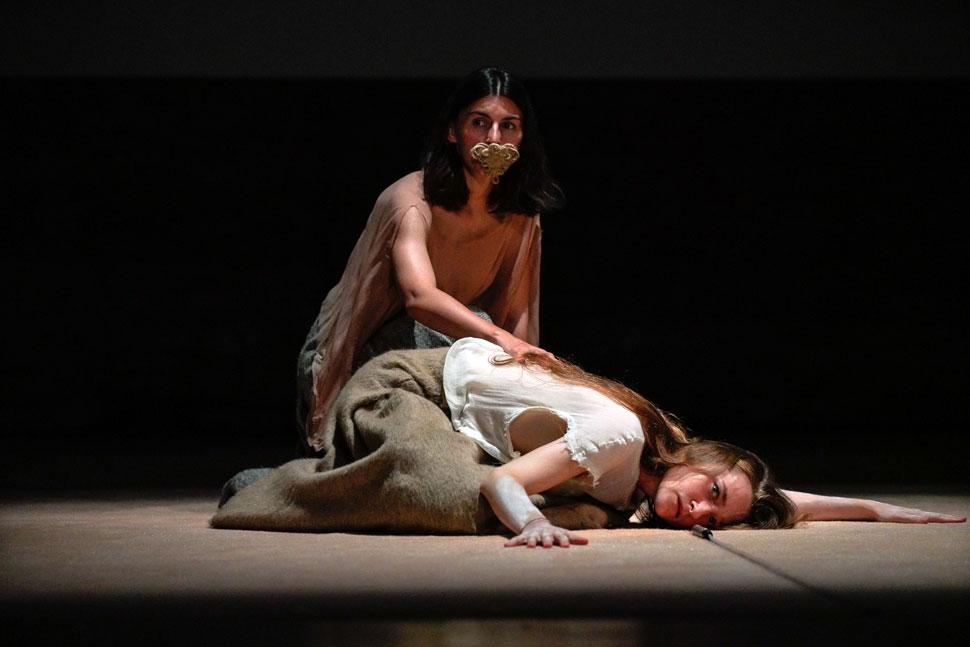(2018, 240’)
on Aeschylus’ Oresteia
dramaturgy Simone Derai, Patrizia Vercesi
translation from Greek Patrizia Vercesi, Simone Derai
line of thoughts S. Quinzio, E. Severino, S. Givone, W.G. Sebald, G. Leopardi, A. Ernaux, H. Broch, P. Virgilio Marone, H. Arendt, G. Mazzoni
with Marco Ciccullo, Sebastiano Filocamo, Leda Kreider, Marco Menegoni, Gayané Movsisyan, Giorgia Ohanesian Nardin, Eliza G. Oanca, Benedetto Patruno, Piero Ramella, Massimo Simonetto, Valerio Sirnå, Monica Tonietto, Annapaola Trevenzuoli
voice of the messenger Pierdomenico Simone
dance Giorgia Ohanesian Nardin
music and sound design Mauro Martinuz
sound assistant Ludovico Dal Ponte
Gustav Mahler, Kindertotenlieder no.1 played by Massimo Somenzi
set and costume design Simone Derai
costumes Serena Bussolaro, Christian Minotto
accessories Christian Minotto, Massimo Simonetto, Silvia Bragagnolo
movable sculpture Istvan Zimmermann and Giovanna Amoroso – Plastikart Studio
video Simone Derai, Giulio Favotto
video / camera, cinematography, post-production Giulio Favotto
video / concept, editing, direction Simone Derai
light design Fabio Sajiz
technical assistant Mattia Dal Bianco
project assistant Marco Menegoni
assistant director Massimo Simonetto
direction Simone Derai
organization Annalisa Grisi
management and promotion Michele Mele
production Anagoor 2018
supported by Fondation d’entreprise Hermès within the framework of the New Settings program
co-production Centrale Fies, Teatro Metastasio di Prato, TPE – Teatro Piemonte Europa, Teatro Stabile del Veneto
with the support of Theater an der Ruhr
with the support of Compagnia di San Paolo
technical sponsors Lanificio Paoletti, Printmateria, 3DZ
thanks to Ministero della Cultura e dello Sport della Repubblica Greca, Museo Archeologico di Olimpia, Istituto Italiano di Cultura di Atene, Lottozero / textile laboratorie
Strobe lights are used during this performance.
